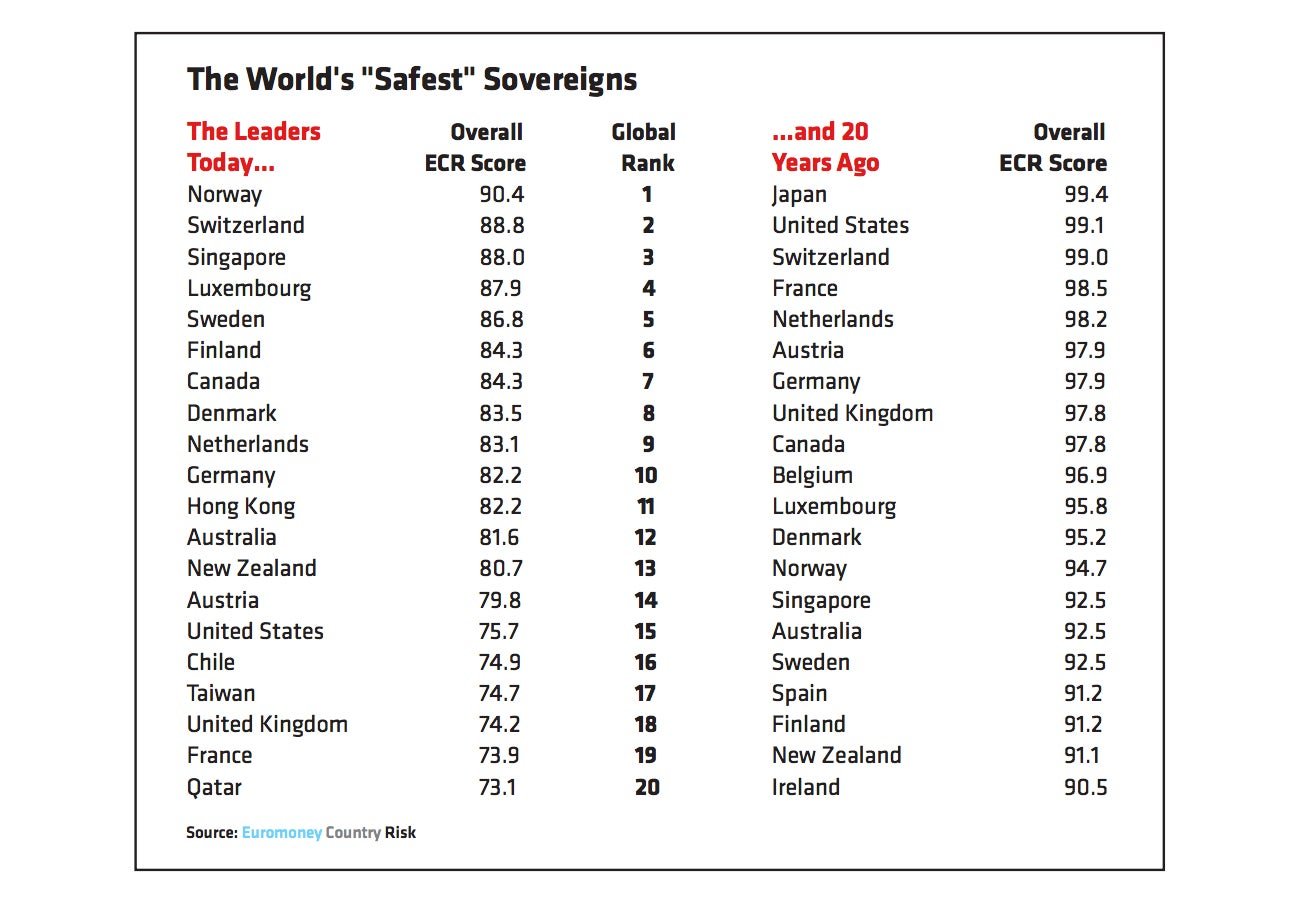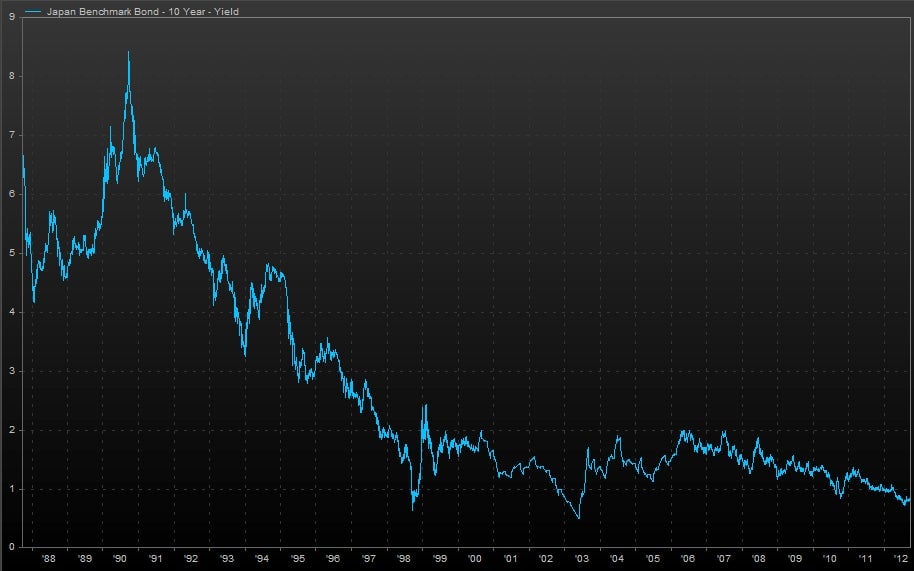Stash your cash here: The world’s safest bond markets
Here’s an interesting little chart issued as part of Euromoney’s Country Risk Survey, showing how perceptions about which government bond markets are truly “safe” have shifted over the last 20 years. Most notable: the decline of Japan from its top status to today, where it is “nestling between Slovakia and South Korea at 24.”

Here’s an interesting little chart issued as part of Euromoney’s Country Risk Survey, showing how perceptions about which government bond markets are truly “safe” have shifted over the last 20 years. Most notable: the decline of Japan from its top status to today, where it is “nestling between Slovakia and South Korea at 24.”

In theory, such a precipitous drop-off in a borrower’s perception of safety should be reflected in a surging interest rates. If investors view borrowers as riskier, they should charge them a higher interest rate. Global bond investors should be running for the hills, right? Well…here’s a look at the yield on the benchmark Japanese 10-year note over the last 25 years.

So what’s going on here? A few things. The first is just the awful economic slump Japan has experienced since its real estate/banking bubble popped in the early 1990s. That’s set off a decades-long battle with deflation, a broad-based decline in prices. Bond investments typically do well in such environments, so bonds become a more attractive investment. That helps stir up demand. (When bond prices rise, interest rates fall.)
Another element is what some folks on Wall Street like to call “financial repression.” Essentially, you can think of this as governments forcing investors toward buying its bonds. The massive savings of Japan’s consumers is channeled through its system of quasi-government postal savings banks, which then channel that cash largely back into the market for Japanese government bonds. That rock solid source of demand also helps to keep demand strong for Japanese government debt.
And then, there’s quantitative easing. Ring a bell? That’s when central banks create new money — fiat currency has its benefits — and use it to buy their own government debt. Right now it’s all the rage. Ben Bernanke’s Federal Reserve announced a third round of such a policy earlier this month. The Bank of England is also doing it. The European Central Bank seems to be on the verge of it, too. But the Bank of Japan has been a modern pioneer of this policy, launching a program back in March 2001. And it’s still doing it. Just recently it upsized its current QE program by a cool 10 trillion yen.
Economists and market prognosticators argue about when, whether and how the current state of low Japanese interest rates could change. The state of Japan’s national accounts is pretty bad. It’s gross government debt-to-GDP ratio is 236%, according to Moody’s. Many have forecast an eventually panic, as Peter Boone and Simon Johnson did in this month’s Atlantic. Maybe, but some of the world’s smartest investors have lost a lot of money betting against Japan’s ability to keep interest rates low. There’s a reason why betting against — or shorting — Japanese government bonds is a trade that’s come to be known as “the widowmaker.”